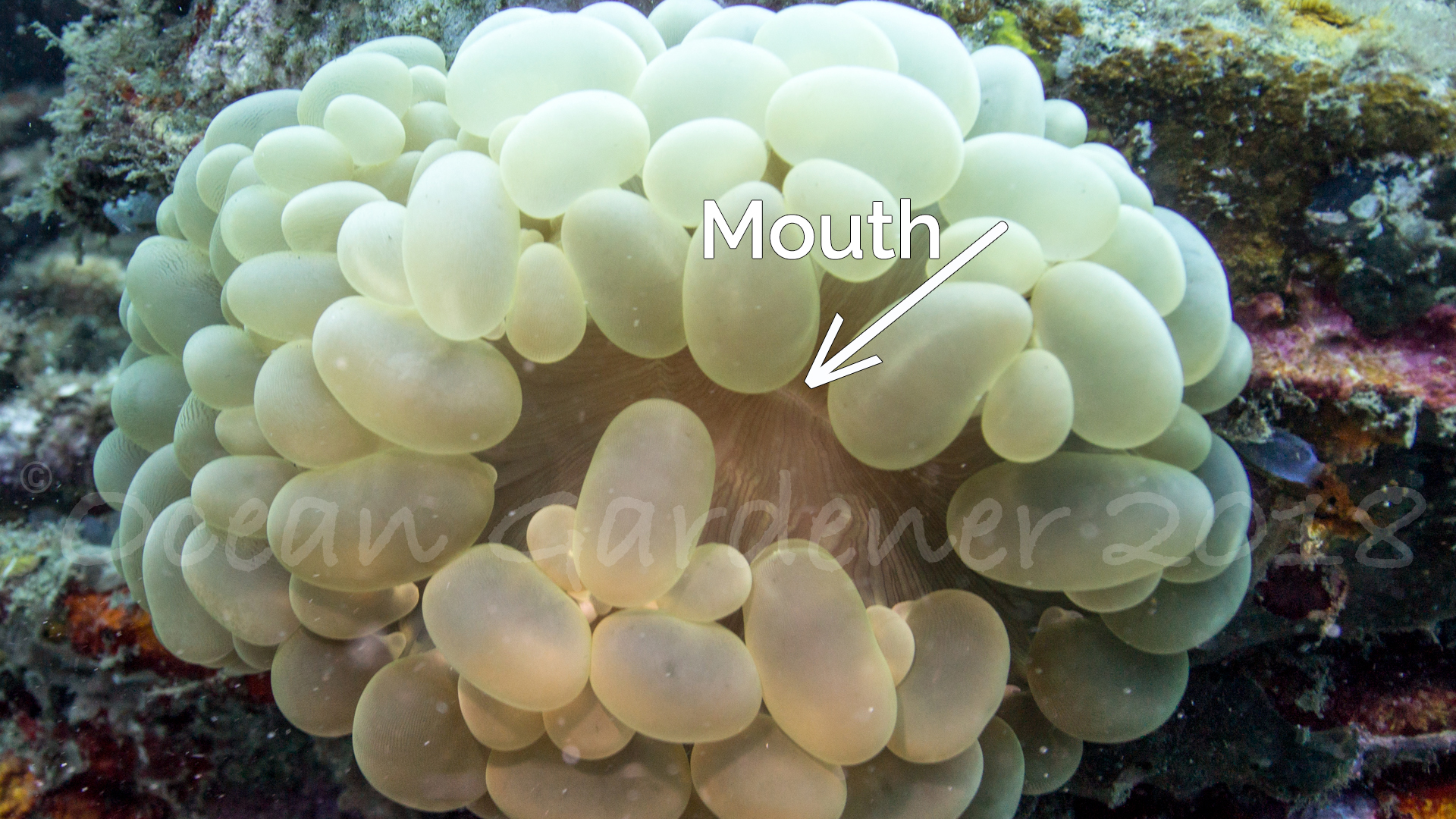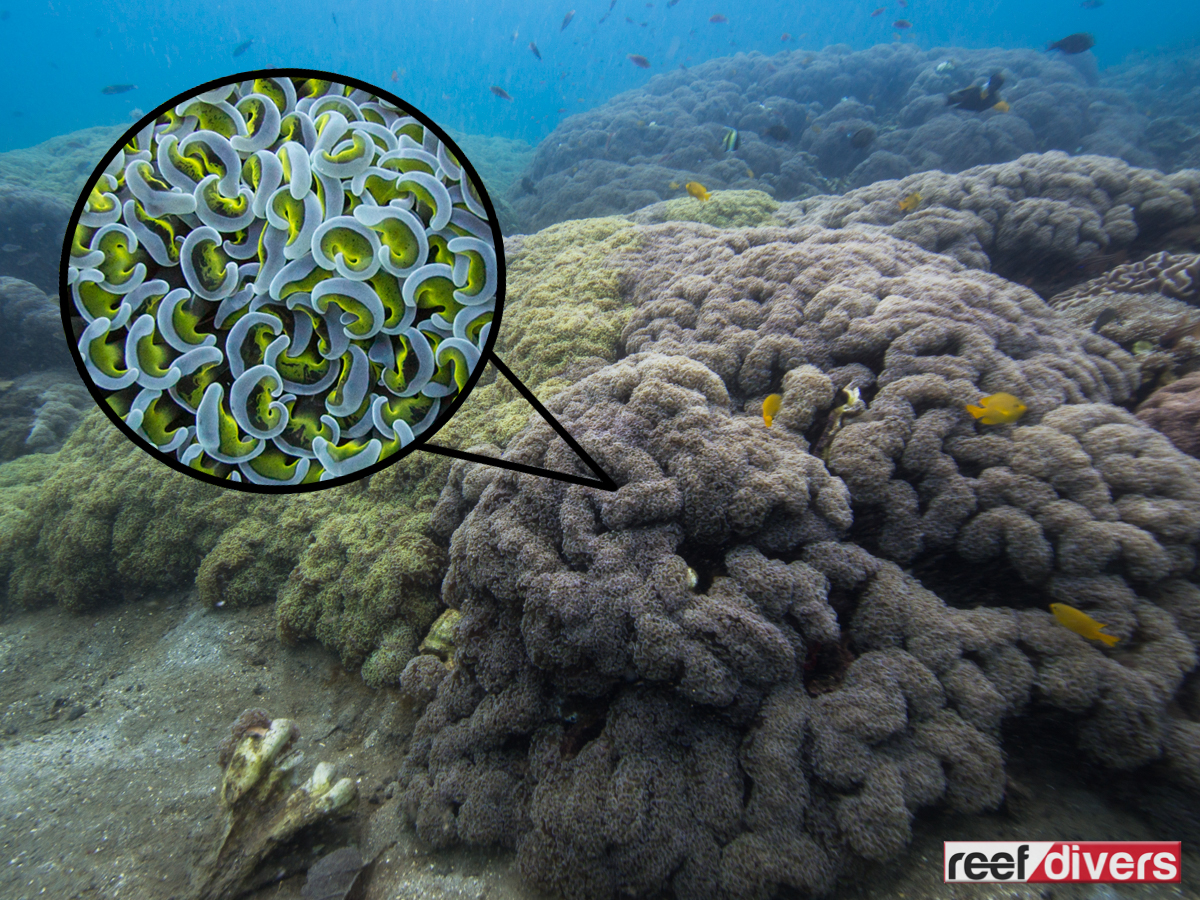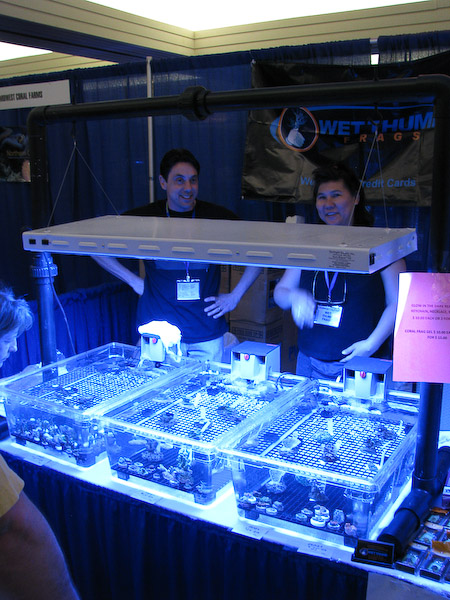Large Polyp Corals
Large polyp corals are any hard coral species which have thick fleshy tissue and large corallites over a few centimeters wide. There are even some extra large species with polyps that can reach 10 even 30 centimeters wide!
Some of these large polyp corals have long flowing tentacles, but don’t be fooled by their soft appearance. Once they close up usually at night, all of these corals have a hard calcium carbonate skeleton below, and they all need photosynthetic algae to survive.
One of the reasons they have such large polyps is for extra surface area to capture light. The more tissue they have the more zooxanthellae they can host which means more energy for the coral.
Bubble Coral
One of the most recognizable large polyp coral is the bubble coral. These corals are often mistaken for fish eggs or another type of celphelapod eggs. But the large fleshy bubbles are actually just park of the corals tentacles.
Beneath the fleshy bubble is a hard calcium carbonate skeleton and in the center of the bubble is a mouth. At night the bubble deflates and sticky feeding tentacles emerge. The bubble coral will catch and feed on zooplankton.
Hammer Coral
Another common large polyp coral is the Euphyllia anchor coral, commonly called the hammer corals. Unless the tentacles are closed up exposing the skeleton, most divers would assume this is a soft coral or some sort of sea anemone.
Euphyllia corals can grow in long meandering skeleton or have a branching form. Sometimes these corals make large colonies hundreds of meters long, this is reef we dove in Manado Indonesia. You find Euphyllia mostly in shallow murky habitats.
Want to know more about coral spotting or take a course with one of our training coral spotting instructors? Check out the Discover Coral Diving course at Murex resorts Sulawesi, or contact Ocean Gardener to learn about courses in Bali Indonesia.



